Which animals do we call southern and which northern? Geographical laws and some environmental factors
Which northern ones?
In the north they live...
In the South they live...
Polar bears, long-legged giraffe, striped zebra, long-tailed monkey, toothy crocodile, thick-skinned walrus, fluffy arctic fox?
titles: squirrel, fox, hedgehog, hare, wolf, moose, bear, lynx, polar bear, walrus, seal, arctic fox, deer, cat, elephant, hippopotamus, giraffe, zebra, kangaroo, rhinoceros, monkey, lion, tiger, leopard, antelope , panther; horns, hooves, body, trunk, fangs, wool, mane, fur, needles, skin, mouth, paws, belly, claws; North, South, forest, steppe, ocean, desert; den, lair, hole, hollow, cave;
signs : shaggy, shaggy, fluffy, strong, cunning, prickly, fast, dexterous, brown, toothy, clumsy, club-footed, beautiful, sharp, striped, powerful, flexible, clumsy, cautious, predatory;
actions: hunt, jump, prowl, howl, growl, squeak, roar, hunt, hide, teach, guard, suck, clang, feast on, swim.
How are their living conditions different?
How do animals adapt to their environment?
Where can city dwellers see all these animals?
Which animals do we call carnivores, which ones herbivores?
Game "Who's the odd one out?":
Lion, elephant, arctic fox, monkey. Why?
Giraffe, elephant, crocodile, hippopotamus? Why?
Long-legged and awkward, He lives in the North,
It is as tall as a cabinet and catches fish all year round.
Long-necked, herbivorous. Thunderstorm of walruses and seals
Well, did you find out who?) giraffe). Shaggy...(polar bear).
Who is this? (This is a giraffe, and this is a polar bear)
Where do they live? (The giraffe lives in the South, and the polar bear lives in the North).
What do they eat? (A bear eats meat and fish, it is a carnivore, and a giraffe eats grass and leaves, it is a herbivore)
What kind of skin do they have?
What kind of legs do they have?
What do they have on their legs?
What kind of necks do they have?
What kind of tails do they have?
Show the animal body parts (torso, head, tail, horns, paws, hooves, etc.). All animals have something in common: head, muzzle, neck, torso, paws, tail. Remember their names.
Formation of nouns with diminutive suffixes “Call it affectionately”
Squirrel - squirrel, monkey - monkey, bear - bear, hippo - hippo, hedgehog - hedgehog, elephant - elephant, hare - bunny, lion - lefty, leopard - leopard, walrus - walrus.
Formation of singular and plural nouns with diminutive suffixes “Who has who?”
The squirrel has a baby squirrel, baby squirrels,
the hare has a little hare, little hares,
a moose cow has a calf, elk calves,
the elephant has a baby elephant, baby elephants,
the fox has a little fox, fox cubs,
the wolf has a wolf cub, wolf cubs,
the walrus woman has a walrus baby, walrus babies,
the tigress has a tiger cub, cubs,
the seal mother has a baby seal, seal pups,
the lioness has a lion cub, lion cubs,
The she-bear has a bear cub and cubs.
"One is many"
Squirrel - many squirrels - squirrels, fox - foxes - cubs, hedgehog - hedgehogs - hedgehogs, hare - hares - hares, wolf - wolves - wolf cubs, elk - moose - moose calves, bear - bears - cubs, walrus - walruses - walruses, seal - seals - calves, deer - deer - calves, elephant - elephants - calves, zebra - zebra cubs.
Formation of masculine, feminine and plural possessive adjectives “Whose tail?” The fox has a fox's tail, fox's paws, a fox's muzzle,
modeled after: a bear, a wolf, a hare.
Classification of concepts “Name the extra word”
Wolf, dog, lynx, fox, hare (dog); fox, wolf, sheep, squirrel (sheep); cow, hare, rabbit, horse (hare).
Selecting the appropriate “Compare” concept
Giraffe and horse. Who is taller than whom? Who is inferior to whom? Elephant and bear. Who is heavier? Who is easier? Hare and turtle. Who runs faster? Who moves slower? Construction of the monologue “Describe any animal according to plan”:
Name; where he lives (North, hot countries...); appearance (size, color, length of fur, distinctive features - an elephant has a trunk, etc.); dwelling (den, hole, hollow...);
habits; how it gets food; how to defend yourself; what does it eat;
who is his enemy; what are its cubs called?
Guess the riddles:
a) Who bees love honey? Who sucks their paw in winter?
b) What kind of forest animal is this? He stood up like a pillar under a pine tree. And stands among the grass - ears bigger than head?
c) She is more cunning than all the animals, does she have a red fur coat?
d) Who threw a pine cone at the children from the tall thick pines? And through the stump it flashed through the bushes like a light
What do the wild animals of our forests eat? The fox eats meat in summer and winter (hare, chickens) and fish. This is a predatory animal.
The squirrel eats nuts and mushrooms in summer and winter, that is, it gnaws on hard ones. This animal is called a rodent.
The hare eats grass in summer and tree bark in winter. This is a herbivore.
In summer the bear eats meat and berries. And in winter he sucks his paw. This is a predatory animal.
Where do they live (in a hole, den, lair, hollow, etc.)
Exercise “Select, name, remember”
: Complete the sentences (pick up and name as many as possible words - signs:
Bear (Which?) – brown, huge, shaggy, clumsy, club-footed, strong.
Hare(Which?)- …
Fox(which?) - …
Bear (what is he doing?)- waddles, roars, sleeps...
Fox (what is he doing?) - …
Hare (what is he doing?) - …
“Words of action." Verbs.
What is the fox doing? What is the bear doing? Squirrel? Hare?
“Whose ears?” “Whose traces?” “Whose tail?”
Bear. Bear ears. Bear tracks. The tail is bearish.
Fox. Fox ears. Fox tracks. Fox tail.
Hare. Bunny ears. Rabbit tracks. Rabbit tail.
Wolf. Wolf ears. Wolf tracks. Wolf tail.
Squirrel. Squirrel ears. Squirrel tracks. Squirrel tail.
Elk. Moose ears. Moose tracks. Elk tail.
Exercise “Say the opposite”
: Finish the sentence.
The elk is big, and the hare …
The wolf has a long tail, and the bear has …
The squirrel is weak, and the wolf ….
Exercise "Guess"
: Complete the sentence:
Legs, hooves, horns- at ... (moose).
Tassels on ears- at ... (squirrels, lynxes).
Needles on the body- at ... (hedgehog).
Exercise “Call me kindly”...
Bear - bear cub, squirrel - squirrel, wolf - wolf cub, hare - hare, elk - calf, fox - chanterelle.
“Mom, dad and baby":
This is a family of squirrels. Mother squirrel, father squirrel and their baby squirrel.
This is a family of bears. Mommy bear, daddy bear and their baby bear.
This is a family of foxes. Mommy fox, daddy fox and their baby fox.
This is a family of hares. Mommy hare, daddy hare and their baby hare
“Who lives where?": The fox's house is called a hole. The fox lives in a hole. A bear's house is called a den. The bear lives in a den. The squirrel's house is called a hollow. The squirrel lives in a hollow. The hare has no house and lives under the bushes.
Find the names of animals living in our forests.
Wild animals
They don’t live with a person,
Constant help
They don't expect him to.
And they live in the forests,
On the mountains, in meadows, steppes,
On and under water,
In the heavens and under the earth.
They get their own food,
They protect the children themselves,
Build a strong home
They look for the gathering place themselves.
Tigers, wolves and elephants,
Hares, wild boars, whales,
Foxes, buffalos, bears,
Vultures, owls and eagles -
It’s impossible to count them all.
It’s impossible to tell about everyone.
Pets
Guess the riddles:
| There are horns, not a ram, The tail is a candle, not a squirrel, It's not a cow, but it gives milk. Goat | The motley itself, Eats green Gives white. Cow |
| Thick grasses entwined, The meadows are curled up, And I myself am all curly, Even a curl of a horn. Ram | The muzzle is mustachioed, Striped fur coat, Washing frequently But I don’t know about water. Cat |
| Who has a piglet, Not clenched in a fist? His feet have hooves. He eats and drinks from a trough. Piglet | He is friends with the owner, The house is guarded Lives under the porch Tail in a ring. Dog |
| Will be born with a beard No one is surprised at this. Goat | Not a plowman, not a blacksmith, not a carpenter, And the first worker in the village. Horse |
What animals do we call pets?
Show the animal body parts (torso, head, tail, horns, paws, hooves, etc.). Remember their names.
Why does a person care for them? (They benefit humans.)
Where do they live? (A cow is in a barn, a pig is in a pigsty, a horse is in a stable, a dog is in a kennel, a cat is at home)
pigs, hog-pig,
horses, horse foal,
dogs - puppy,
cats, cat - kitten,
rabbits, rabbit - little rabbit.
"Form compound words"
Horse - with a long mane (long mane), with a long tail
(long-tailed)
A dog with short hair is short-tailed, and a dog with long hair is long-haired.
Write a descriptive story about any of the animals
And the inhabitants of this northernmost region are quite happy with this state of affairs. We are not talking about Eskimos, but about animals that call the Arctic their home. While sub-zero temperatures and bleak boreal forests may seem bleak and unforgiving, many animals thrive in the frozen tundra of the Arctic Circle.
Some of these animals you've probably seen before, like the polar bear or polar owl, while others are more exotic, like the "unicorn of the sea" or the lynx. Let's learn more about 13 representatives of the animal kingdom of the ice-covered Arctic Circle.
Wolverine
What comes to mind when you think of wolverine? A ferocious animal similar to a wolf? In fact, these creatures are part of the mustelidae family and are more similar to river otters. Unlike the movie character of the same name, Wolverine does not have retractable metal claws. However, their claws are semi-extendable, but are most often used for digging and climbing.
Lynx
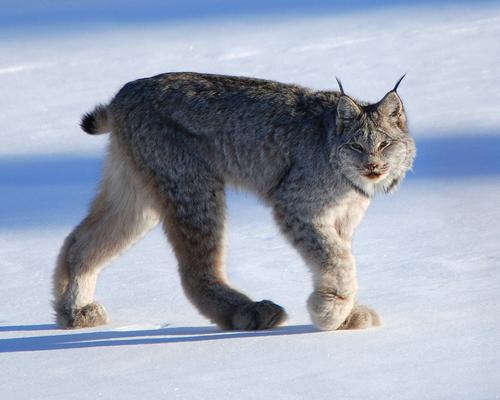
The lynx is a little-studied feline that is usually small in size. They have long legs and wide paws, which makes it easier to walk in deep snow. Most often they hunt small white hares. In the 1970s, the lynx was considered an extinct species, but later successfully reappeared. Today it is listed as a critically endangered species.
little swan
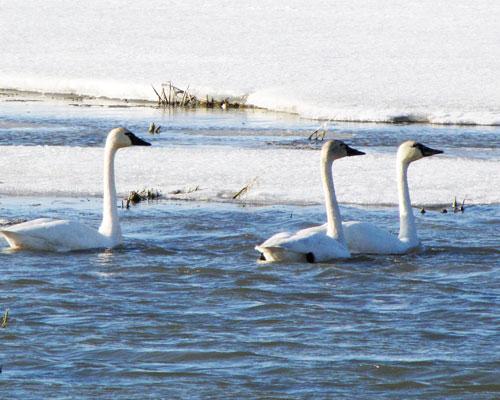
The little swan migrates to Alaska every spring to build a nest and lay eggs. In the fall, this species moves to the northeastern United States along the Atlantic coast.
White hare
![]()
These amazing creatures can be found in the northern regions of Alaska, Canada and Greenland. During the winter months, the snowshoe hare's fur turns white, allowing it to camouflage itself against the snow, but in summer it is typically gray-brown in color.
The mountain hare is not considered a critically endangered species.
Red fox

The red fox is by no means unique to the Arctic Circle. In fact, it can be found on every continent in the world except Antarctica. Unfortunately, it is considered dangerous in many ecosystems. In Australia, for example, the red fox was brought by humans in 1855 for the purpose of recreational hunting and quickly took root in the wild. About 150 years later, the species became a threat to large numbers of bird and mammal populations native to Australia.
Belukha
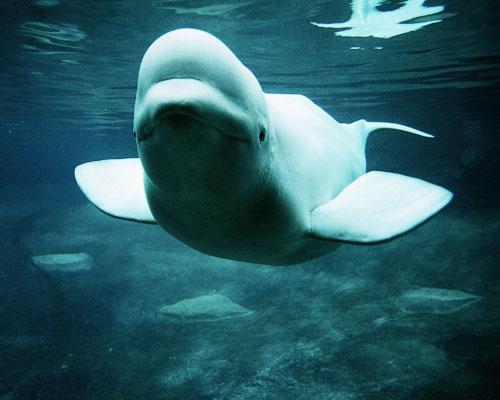
This famous white whale can be found in the icy waters of Alaska, Canada, Greenland and Russia, but the animal's populations in all of these countries are considered endangered.
There are only five populations of this species in Alaska. Cook Inlet's beluga whale population, one of the few resident ones, was recently listed under the U.S. Endangered Species Act.
Polar bear
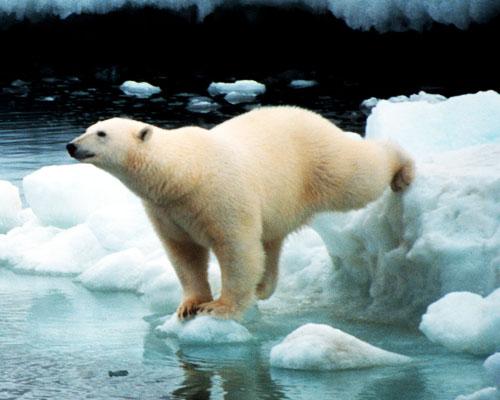
The polar bear is also known as the polar bear. These majestic animals are considered an endangered species and are protected by law in many countries. Their diet includes primarily seals, and therefore they live mainly in coastal areas.
Caribou

Woodland caribou - the domesticated animal is called "reindeer" - can be found in southern Alaska, Canada, Russia and Greenland. This is the only species of deer in which both males and females have antlers. Caribou are protected under the Endangered Species Act.
Narwhal
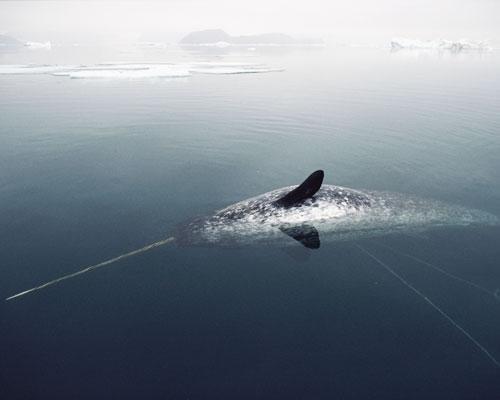
Called the “unicorn of the sea” because of the long (sometimes up to 3 meters!) fang protruding from its jaw, this unique Arctic animal can be found in the waters of Greenland and Canada. The hunting and feeding system of narwhals still remains a mystery to scientists, although it is reliably known that the canine is not used for hunting. Their diet consists mainly of squid.
polar owl
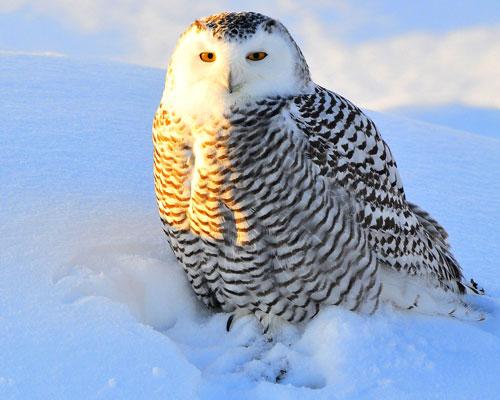
Polar owls are the only birds that live year-round in the Arctic and do not migrate. When a snowy owl is fully mature, its feathers are pure white, but owls have gray plumage. The famous Harry Potter animal named Hedwig is a polar owl.
Arctic fox
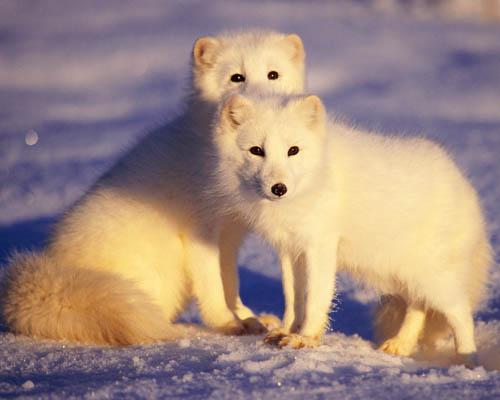
The Arctic fox can be found in most Arctic ecosystems in the Northern Hemisphere, even in Iceland, where it is the only native land mammal. It appeared in Iceland during the last Ice Age, crossing onto a volcanic island on frozen water. This fox-like species is considered endangered in Scandinavia, where it has been strictly protected for decades.
Great auk
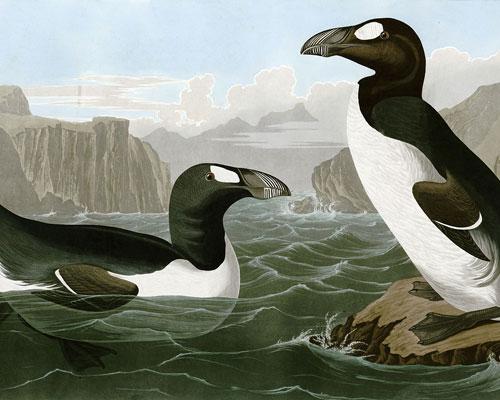
The great auk was a species of penguin and was the first flightless bird of this family. She lived in North Atlantic waters, particularly Canada, and could be found as far away as New England. Hunting of the great auk led to its extinction in the 1800s.
Modern penguins live only in the Southern Hemisphere.
Atlantic deadlock
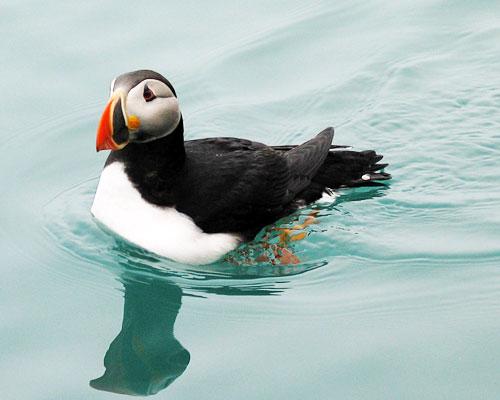
This memorable creature is related to the extinct great auk described above, but it is alive and well and can be found in Northern Europe, the Arctic Circle, parts of Maine, USA, and the island of Newfoundland. This seabird spends most of its time in the water, diving for fish and squid. On land it can be found in spring and summer during the breeding season.
Nature has never repeated her creations twice. It only moves forward, creating more and more new species, among which there are amazing creatures that can amaze even a person experienced in zoology.
We have compiled a list that includes some of the most unusual animals in the world, but if you are also interested in reading about animals with the most unusual behavior, you can get acquainted with them in this article.
The most unusual birds
Red-crested turaco
A bird whose plumage contains true green and red colors is the red-crested turaco, the only bird with this coloration. Water that gets on the red feathers of a turaco turns red due to the high copper content in the plumage pigment. 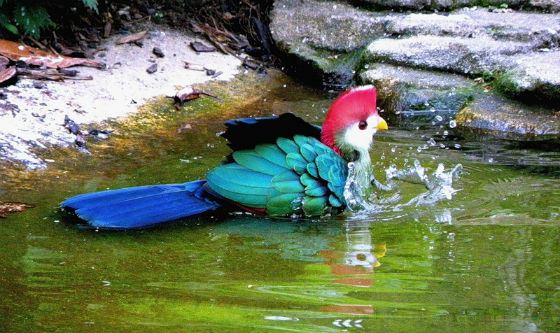
hatchet bird
Is it possible to fly underwater? It turns out that it is possible - and the hatchet bird proves it. While getting food underwater, it literally flies using its wings. Waterfowl can function comfortably at depths of up to 100 meters. 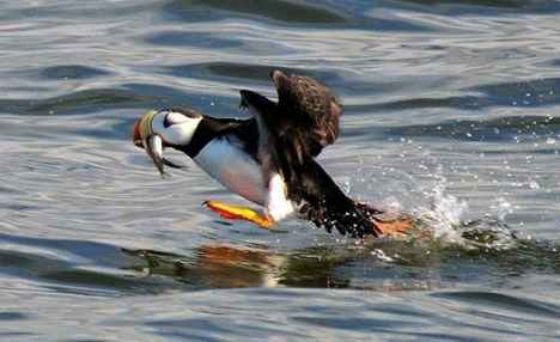
Blue-footed booby
Blue-footed boobies, inhabitants of the Galapagos Islands and the Pacific coast of America, look comical. The gannet is easy to recognize – its webbed feet are blue. During the mating season, males show off their blue legs by dancing in front of females. 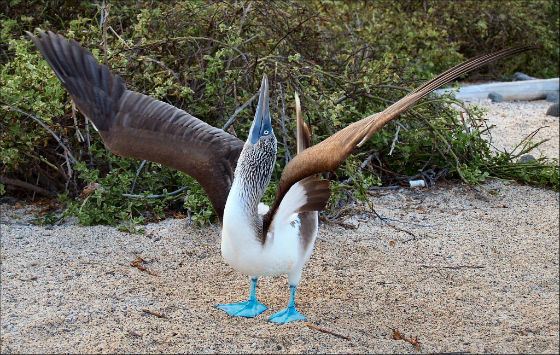
The most unusual mammals
Tarsier
The tarsier has a large head, disproportionate to the size of the body. The mammal can rotate it almost 360 o. Another characteristic feature of the tarsier is the ability to communicate with relatives using ultrasonic waves. ![]()
Echidna
The echidna, endemic to Australia and New Guinea, is a unique animal, unlike any other creature on the planet. It is a mammal, but the echida's offspring hatch from eggs. The echidna's mouth is so small that it is unable to grab anything with it, but it pulls out a long tongue from its mouth, and food sticks to it. 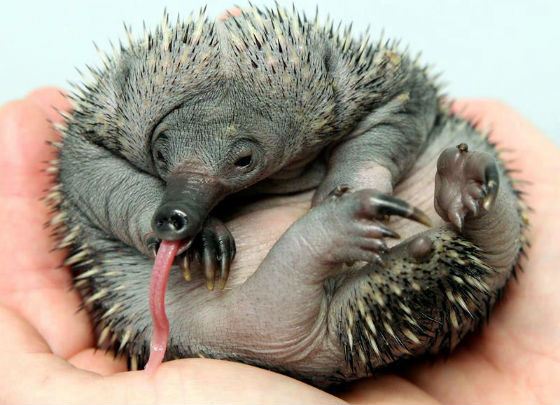
Despite their size, the animals swim well even over long distances. Keen vision allows the echidna to instantly identify danger even at night and hide in crevices, and if there are none nearby, powerful front paws come to the rescue, digging a hole in the ground in no time. If the soil is hard, the echidna curls up into a ball, exposing its entire arsenal of needles.
Malaysian bear or biruang
The mammal from the bear family lives in India, China, Thailand, Indonesia, and the Indochina Peninsula. Biruang is a stocky, strong animal with a wide and short muzzle. At the same time, it has high limbs with disproportionately large paws, which, in turn, are distinguished by large curved nails. 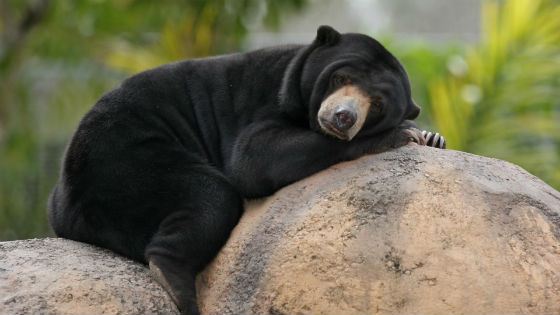
The Malaysian bear is black in color, except for a yellow-roan face and a red or white horseshoe-shaped spot on the chest. The animal is nocturnal; During the day, the biruang sleeps or basks in the sun on tree branches, where it has something like a nest. It is considered practically the rarest species of bear.

Komondor
An interesting breed of dog is the Hungarian Komondor Shepherd. Representatives of this breed resemble either a giant mop on four legs or a dreadlocked Rastafarian - this is due to the unique structure of the coat, the length of which can reach one meter. The owners of such a dog are spared from daily manipulations with a brush - its fur is simply impossible to comb - but they still need to visit the groomer, because as the strands grow, they need to be separated to avoid matting. The long white hair is curled into peculiar laces, which make the Komondor's appearance even more impressive. 
Star-nosed mole
An insectivorous mammal from the mole family. It can only be found in the Northeastern United States or Southeastern Canada. Externally, the animal is very different from other representatives of moles. Only it has a peculiar stigma structure, which resembles a star of 22 fleshy, soft, moving and bare rays. When a mammal is looking for food, all the rays on the stigma, except the two middle and upper ones, move. During the absorption of food, the rays are pulled together. 
Angora rabbit
This rodent looks very impressive. Among them there are individuals with a coat length of up to 80 centimeters. The wool of the Angora rabbit is very valuable - many useful things can be made from it, from scarves and socks to underwear and fabric. Wool is sold by the kilogram and sells out instantly. 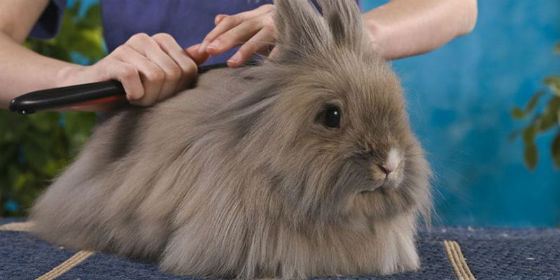
From one rabbit you can get up to 0.5 kilograms of wool per year. Most often, women own this funny animal, which is why it is sometimes called “ladies’.” Representatives of the breed grow up to 61 centimeters in length and reach a weight of up to 5 kilograms. Rabbits need to be brushed weekly, otherwise they start to look downright ugly.
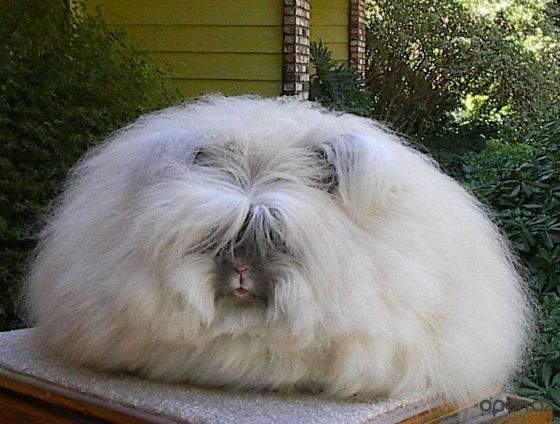
Lesser (red) panda
This animal belongs to the raccoon family and lives in China, Bhutan, Northeast India, Northern Burma, and Nepal. It can be found in bamboo forests that grow at 2000-4000 meters above sea level. The animal has nut or red fur on top, black or dark reddish-brown underneath. And on the back, the ends of the hair are colored yellow. The tail is red, the paws are black, the head is light, and the muzzle and tips of the ears are white. Along the eyes there is a pattern resembling a mask. The red panda is active at night, at dusk, and sleeps in a hollow during the day. 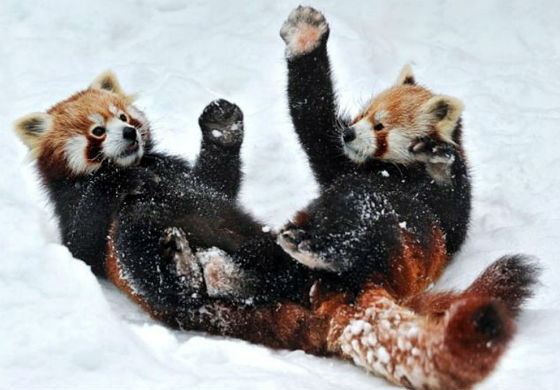
Sloth
The partially toothed mammal lives in South and Central America. Almost all the time, sloths hang on trees with their backs down, spending 15 hours a day sleeping. The behavior and physiology of sloths are aimed at saving energy, so the animals’ diet consists of only leaves, and this is quite enough for them.Life of sloths
Nature gave sloths a long neck so that they could reach leaves without unnecessary movements. As a result, the animals practically do not leave the top of the tree, leaving their homes about once a week to fulfill their natural needs. Sometimes sloths gather in groups and also lazily mate.
Imperial tamarin
The prehensile-tailed monkey lives in the rain forests near the Amazon River. You can distinguish it from other monkeys by its long white mustache, which hangs down to the shoulders, giving the tamarin a resemblance to some ancient Chinese philosopher. 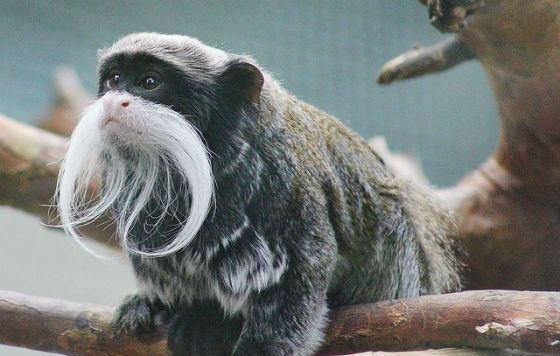
Emperor tamarins live in isolated groups of up to 10 individuals, climbing trees where access to larger primates is denied. The pack maintains an extremely strict hierarchy; each member of the family has a specific role. The highest rank is that of the oldest female. She does not care for the cubs, paying attention to them only during feeding with milk, and the babies spend most of the time in the company of adult males.
White-faced saki
This bizarre primate lives in South America, among dense rain forests. It is extremely easy to determine whether a monkey belongs to this species; it is enough to notice the characteristic cream color of the head, contrasting with the dark fur on the body. Unlike most South American primates, the white-faced saki does not use its tail to cling to tree branches. It uses a long, bushy appendage for balance during long leaps from branch to branch. 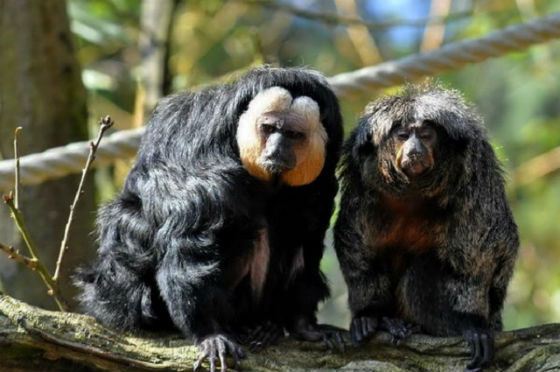
Tapir
A herbivorous equid animal that lives in warm places in South America, Central America, and Southeast Asia. Newborn tapirs resemble a hybrid of a wild boar and an anteater; adult individuals resemble the fruits of the union, again, of an anteater and a panda. 
The tapir's hind legs are three-toed, and its front legs are four-toed. Small hooves on the fingers help animals walk on muddy and soft ground.
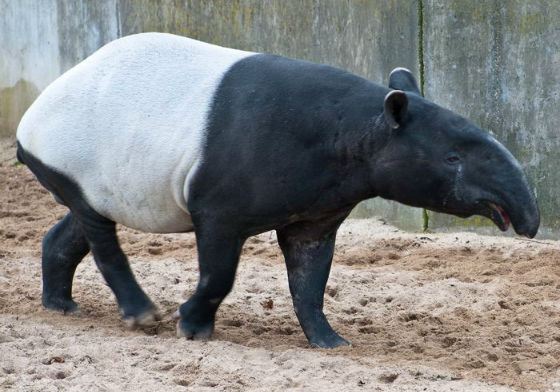
Tapirs are afraid of humans and run away at the sight of bipeds - many years of experience suggest that they will not hesitate to kill for meat and skin.
Unusual fish
Clown fish
The males of this fish, popular among aquarists, can change their sex. An undeniable hierarchy reigns in a school of clown fish: a dominant pair is selected from among the entire population. The remaining members of the family are male individuals who not only do not receive privileges in the form of the opportunity to mate, but are also forced to control their growth in order to avoid jealousy on the part of the alpha male. If the leader female dies, then her partner changes sex and becomes a female himself, and one of the “reserve players” takes on the role of the dominant male. 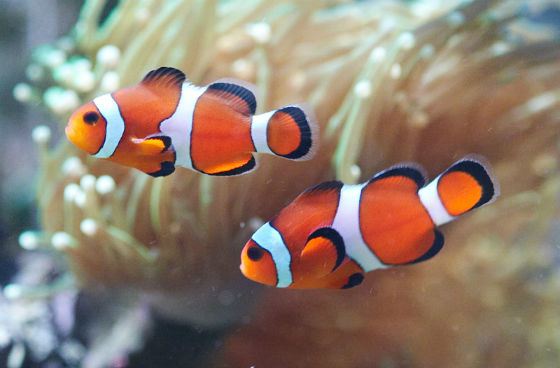
Crocodile fish
The crocodile fish, or scientifically the spotted flathead, actually looks like a green predator. For the sake of camouflage, it uses a spotted color, becoming gray or green depending on the color of the bottom. 
Saberfish
A terrifying-looking fish lives in the ocean at great depths. Its second name is “man-eating fish.” The sabertooth's teeth are so long that they have a kind of sheath on both sides of the fish's brain. The saber tooth quickly pierces its victim several times with its nail-like teeth. Adults are very different from young fish. The difference is so great that scientists only realized after fifty years of research that the young and adult individuals are representatives of the same species. 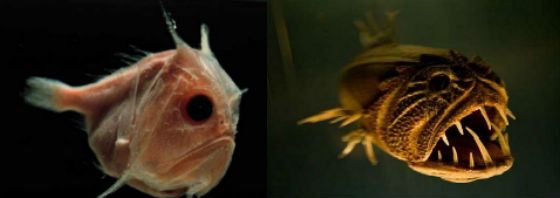
Hagfish
Unusual jawless animals that can be found in the seas of temperate latitudes at depths of up to 400 meters. The second name for hagfish is witch fish. The life support system of these creatures is salt water. If the percentage of salt content in the water drops to 29%, then hagfish stop feeding, and at 25% and below they simply die. 
Hagfish - witch fish
Leafy Sea Dragon
The official emblem and symbol of South Australia. This fish, a member of the needlefish family and a relative of the seahorse, is found exclusively in the southern and western seas of Australia. The processes of the body and head of the fish are similar to leaves - they serve for camouflage in shallow water. Predators confuse the bizarre creature with algae and do not even try to attack it.Leafy sea dragon on video
The leafy sea dragon swims with the help of an absolutely transparent pectoral fin, which is located on the crest of the neck, and also a colorless dorsal fin in the tail area.
There are other unusual creatures that appeared on our planet thanks to human intervention. For example, a pizzle bear or a liger. Read about the most unusual hybrids on uznayvse.ru.
In the latitudes north of the 65th parallel there is a natural zone of arctic deserts, a permafrost zone. The climate of the Arctic deserts is extremely harsh, with strong winds, little precipitation, and very low temperatures (the average temperature even in summer is close to 0 ° C). Snow cover on land lasts almost all year round, disappearing only for a month and a half. There is a polar night here for almost half a year and a polar day for the same amount of time. Only warm Atlantic currents bring a little more heat and moisture to these latitudes, namely to the western coast of Spitsbergen.
Animals and birds that dare to spend the winter in these latitudes must adapt to foraging at dusk or searching for prey in the dark. Both birds and animals feel a lack of heat even in the summer in the Far North. Their entire existence depends on the production, economical consumption and conservation of heat. Therefore, animals and birds, some constantly, others with the arrival of autumn, have thick, long fur or plumage. Large animals necessarily have a thick layer of subcutaneous fat, and greater body mass allows more heat to be produced. Some arctic animals have short legs and ears, and birds have small beaks. This makes it easier for them to retain body heat, because long limbs get cold faster. Most birds, like animals in winter, are light or white in color.
If there are no more than 20 species of animals in the Arctic, then there are over 90 birds. It is easier for birds than for land inhabitants to take advantage of the gifts of Arctic nature. In the summer in the Arctic, although it is cool, there is enough food. 2/3 of all bird species can easily fly south when they sense the approach of a harsh winter. In the spring they return here. Summer, with its extremely long daylight hours, provides more time for hunting. These photos show birds that live year-round in the Arctic Circle.
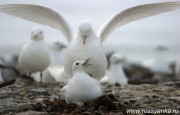
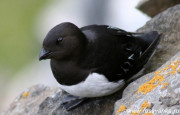 White gull Lyurik Kulik
White gull Lyurik Kulik
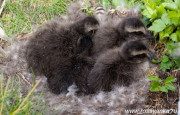
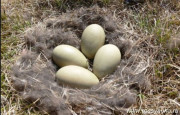
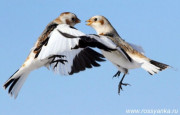
ABOUT Common eider Bunochka
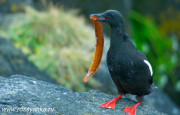
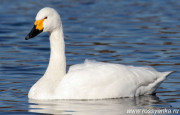
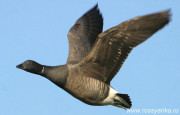
Chistik White goose Brent goose
Ecology
Hands for a person are one of the most important parts of the body. We do almost everything with our hands, even communicate. However, man is not the only creature on the planet with dexterous hands and fingers. The limbs of animals, which are commonly called paws, can surprise a lot. We invite you to learn about the most unusual paws in the animal world.
Amazing animals
Threatening Aye-Aye
Aye-aye- an amazing creature that lives in Madagascar, which can “show the middle finger” like no one else in the world. Aye-aye or little arm- a small primate that can be called the strangest of all primates. It has ugly, bony paws with long fingers and claws, reminiscent of heroes from fairy tales about vampires and werewolves.

Moreover, the middle finger of the hand is slightly larger than the others and protrudes noticeably. With his help the beast knocks on trees looking for voids in the bark, where tasty insects on which it feeds can hide. If an aye-aye finds a treat, it bites through the wood and uses its sinister long finger to snag the prey.
Little hands, despite their threatening appearance, completely harmless for everyone except insects, however, the inhabitants of Madagascar are very unfriendly to these animals, considering meeting them a bad sign. If an aye-aye is seen near a village, he will be killed immediately, as it is believed that otherwise misfortune will befall the village.

Helen the Flying Frog
In 2009, while traveling through the forest near the Vietnamese city of Ho Chi Minh City, biologists came across an amazing frog. This frog is long about 9 centimeters, as it turned out, belonged to a new species of flying frogs unknown to science, which are known for their ability to jump from one tree to another and float in the air using special webbed paws.
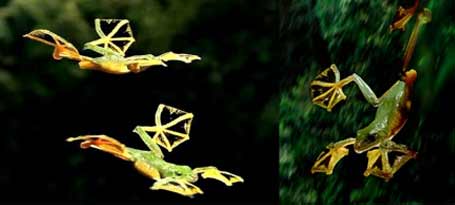
Biologist Judy Rowley, who discovered this frog in Vietnam, gave it its name flying frog helen in honor of his mother Helen Rowley.

The most amazing animals
Many-toed mole
Moles- very cute animals, with the possible exception of Mole Starsnout, which lives in the USA and Canada. Moles have amazing limbs, which they simply need in order to travel underground.
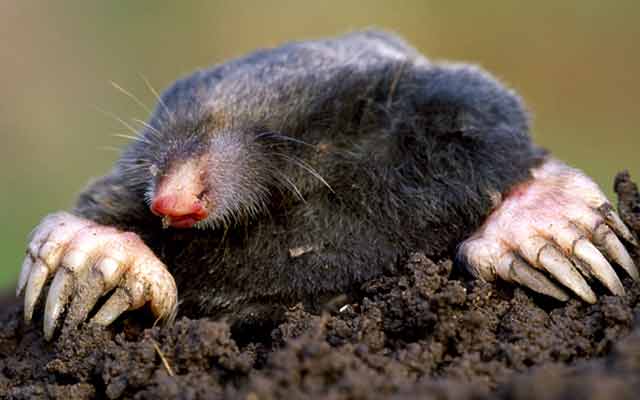
The large, flat front paws work like shovels, and the long claws on the toes allow dig underground holes and tunnels, in which moles find shelter and food.
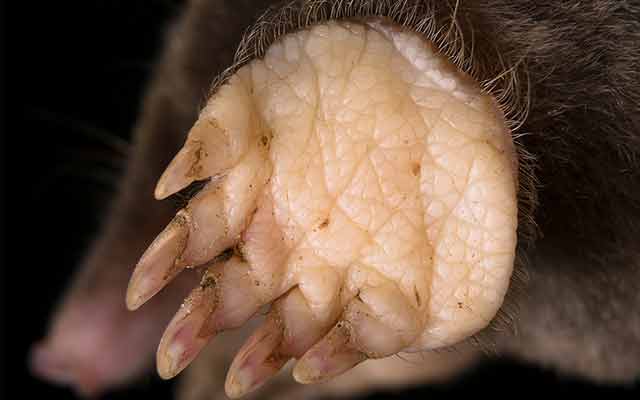
In 2011, researchers University of Zurich suggested why mole paws dig the ground so well: moles have one extra finger– sickle-shaped spare thumb.
This thumb has no motor joint, mole leans on him while digging, which gives its shovel claws extra strength. Studies have shown that the bone of this finger develops from the bones of the wrist at the embryonic stage somewhat later than the bones of the other fingers. Moles really have not 5, but 6 fingers on your paws!

Sticky gecko
Geckos boast amazing paws that allow them to cling almost for any surface. The lines on the soles of their paws are covered with hairs called bristles, which are also covered with bristles.
![]()
The latter structures are so small that they allow geckos to stick to the surface on which they move. They allow you to strengthen van der Waals force, a weak electrical force that holds many things together, including most organic matter.
